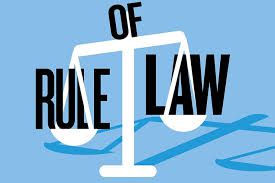GST: A Brief Overview
India being a federal country where both the centre and states have been
assigned powers to levy and collect taxes through appropriate legislations. Both
the levels of government have distinct responsibilities to perform according to
the division of powers prescribed in the constitution for which they need to
raise resource. A dual Goods and Services Tax was therefore proposed keeping in
mind the constitutional requirements.
Along with the amendments in the constitution, to empower the centre and states to levy and collect GST, four legislation was introduced with assent of President on April 12,2017, which were :- The central GST Act , The intergrated GST Act, The GST (compensation to states) Act, The Union Territory GST Act.
"Goods And Services Tax" means a tax on supply of goods or services, or both, except taxes supply of alcoholic liquor for human consumption. It is a multi stage, destination based consumption tax, replacing multiple indirect taxes including VAT, excise duty, services taxes, etc. It is also a value added tax on activity of supply of goods and/or services, irrespective of such activity being manufacture of goods, sale of goods. It offers tax credit at every stage thereby taxing only value addition. Supplier at every stage set off the credit and final tax is paid by final consumer. Since seamless flow there will not be cascading effect of taxes.
There are four slabs namely 5%, 12%, 18%, and 28% for all goods and services. Alcohol for human consumption is out of GST. Five petroleum products ( crude, petrol, diesel, ATF, and natural gas) are presently non- taxable under GST but they will be brought into GST fold at later date by the recommendation of GST council. There are also some Zero rated supply in GST which are for goods that are exempted from GST.
Evolution of GST
Unfolding the runners of history, the idea of public GST in India was first mooted by Kelkar Committee in the time 2004. The Committee recommended public GST. The first advertisement for the preface of GST was made in Budget Speech on 28th April, 2006 by the also Finance Minister, P. Chidambaram. The proposed target date to introduce civil GST was 1st April, 2010. The Empowered Committee of State Finance Ministers( EC) which had formulated the design of State Handbasket was requested to come up with a roadmap and structure for the GST.
Joint Working Groups of officers having representatives of the States as well as the Centre were set up to examine colourful aspects of the GST and draw up reports specifically on immunity and thresholds, taxation of services and taxation ofinter-State inventories. Grounded on conversations within and between it and the Central Government, the EC released its First Discussion Paper( FDP) on GST in November, 2009. This spells out the features of the proposed GST and has formed the base for discussion between the Centre and the States so far.
The Constitution of India was amended from 16th of September, 2016 to make provision for the preface of GST. By this emendations in the Constitution both the Centre and the States shall have concurrent power to levy and collect the GST on both goods and services.
Models Of GST
Even though most countries have adopted similar principles of GST, there remain significant differences in the way it is implemented. These differences result not only from the continued presence of exemptions and special arrangements to meet specific policy objectives, but also from differences of approaches in the definition of the jurisdiction of consumption and therefore of taxation.
However, in view of the federal nature of Indian Constitution, dual model (Canada based) of GST was planned, where the power to levy taxes would be subjectively distributed between centre and states thus, GST is levied by both, the centre as well as the states and there will be distinct levies in the forms of central goods and services (CGST), State Goods and Services Tax (SGST) and Integrated Goods and Services Tax (IGST) allowing the tax credit across these three variants of taxes. Currently, Brazil and Canada also follow dual GST model.
Problems under GST
GST obedience which were envisioned to be easier and less complex, have turned out to be a compliance nightmare with multiple and frequent changes in the tax returns and reporting requirements. Further, GST portal has been a riddle and cause of concern for many taxpayers since its commencement.
Some of the major problems are:
A uniform and rationalized tax rate structure is a central characteristic of any effective GST legislation. Although the GST legislation has made some advances on this front, much work is required to attain this target. Many nations implementing GST have only one rate for all items. From zero to 28%, India has seven rates, and this number goes up if we also take into account compensation rates.
It would be better to reduce the GST tax rates to two or three. A GST in India continues to be a compliance burden with multiple filing obligations and lengthy returns. This has led to exorbitant compliance costs and efforts. An urgent need is to have rationalized, simplified, robust, and decreased compliance conditions with sufficient scope for rectification and amendment to guarantee that correct disclosure can be made with the minimum difficulty and delay.
With technology impacting all parts of the business, greater investment in technology for updating the user interface and making it simpler to use, especially for the small and medium enterprises, could place GST in India on par with rest of world and help achieve the bigger goal of the ease of doing business.
The government must set small business firms by lifting exemption limit. As per GST data, out of 14 million registrations, companies less than INR15 million annual turnover account for 84%, but contribute less than 7% of tax collected. The exemption limit must be lifted to INR 15 million for goods and services. This is a monthly turnover of INR1.5 million, which at 10% of profit margin converts into just INR120,000.
One of the biggest challenges is that the GST Network (GSTN) compliance is yet to reach full capacity. Even after the half decade of GST execution, the GST Appellate Tribunal is yet to be established. This has resulted in multiple court cases, heavy interest costs and GST refund being trapped. Also we require to create another institution in the form of a GST state secretariat that can bring together senior officers from centre and states in an institutional forum registered under the Society Act. This forum could also provide a common point of contract for trade and industry to redress grievances on non-policy matters.
There is also requirement to restructure the GST rate list and make it compatible with machine processing. The GST uses harmonized structure (HS) codes for classifying most items. All the GST rates should confirm to HS's six digit standard description.
Conclusion:
GST is a positive step towards shifting Indian economy from the informal to formal economy. It is important to use experiences from global economies that have implemented GST before us, to overcome the forthcoming challenges. The evolution to the GST regime which is accepted by 159 countries would not be easy. Confusions and complexities were expected and will happen. India, at some point, had to comply with such regime.
Though the structure might not be a perfect one but once in place, such a tax structure will make India a enhanced economy favourable for foreign investments. Until now India was a union of 29 small tax economies and 7 union territories with different levies unique to each state. It is a much accepted and cherished regime because it does away with manifold tax rates by Centre and States.
It has nurtured greater coordination, reduced tax barriers, and streamlined the tax system, leading to improved efficiency and competitiveness in the Indian economy. The successful implementation of GST relies on a cooperative and consensus-based approach between the Central and State Governments. It has changed financial relations, safeguarding greater coordination and efficiency in the Indian tax system.
Along with the amendments in the constitution, to empower the centre and states to levy and collect GST, four legislation was introduced with assent of President on April 12,2017, which were :- The central GST Act , The intergrated GST Act, The GST (compensation to states) Act, The Union Territory GST Act.
"Goods And Services Tax" means a tax on supply of goods or services, or both, except taxes supply of alcoholic liquor for human consumption. It is a multi stage, destination based consumption tax, replacing multiple indirect taxes including VAT, excise duty, services taxes, etc. It is also a value added tax on activity of supply of goods and/or services, irrespective of such activity being manufacture of goods, sale of goods. It offers tax credit at every stage thereby taxing only value addition. Supplier at every stage set off the credit and final tax is paid by final consumer. Since seamless flow there will not be cascading effect of taxes.
There are four slabs namely 5%, 12%, 18%, and 28% for all goods and services. Alcohol for human consumption is out of GST. Five petroleum products ( crude, petrol, diesel, ATF, and natural gas) are presently non- taxable under GST but they will be brought into GST fold at later date by the recommendation of GST council. There are also some Zero rated supply in GST which are for goods that are exempted from GST.
Evolution of GST
Unfolding the runners of history, the idea of public GST in India was first mooted by Kelkar Committee in the time 2004. The Committee recommended public GST. The first advertisement for the preface of GST was made in Budget Speech on 28th April, 2006 by the also Finance Minister, P. Chidambaram. The proposed target date to introduce civil GST was 1st April, 2010. The Empowered Committee of State Finance Ministers( EC) which had formulated the design of State Handbasket was requested to come up with a roadmap and structure for the GST.
Joint Working Groups of officers having representatives of the States as well as the Centre were set up to examine colourful aspects of the GST and draw up reports specifically on immunity and thresholds, taxation of services and taxation ofinter-State inventories. Grounded on conversations within and between it and the Central Government, the EC released its First Discussion Paper( FDP) on GST in November, 2009. This spells out the features of the proposed GST and has formed the base for discussion between the Centre and the States so far.
The Constitution of India was amended from 16th of September, 2016 to make provision for the preface of GST. By this emendations in the Constitution both the Centre and the States shall have concurrent power to levy and collect the GST on both goods and services.
Models Of GST
Even though most countries have adopted similar principles of GST, there remain significant differences in the way it is implemented. These differences result not only from the continued presence of exemptions and special arrangements to meet specific policy objectives, but also from differences of approaches in the definition of the jurisdiction of consumption and therefore of taxation.
However, in view of the federal nature of Indian Constitution, dual model (Canada based) of GST was planned, where the power to levy taxes would be subjectively distributed between centre and states thus, GST is levied by both, the centre as well as the states and there will be distinct levies in the forms of central goods and services (CGST), State Goods and Services Tax (SGST) and Integrated Goods and Services Tax (IGST) allowing the tax credit across these three variants of taxes. Currently, Brazil and Canada also follow dual GST model.
Problems under GST
GST obedience which were envisioned to be easier and less complex, have turned out to be a compliance nightmare with multiple and frequent changes in the tax returns and reporting requirements. Further, GST portal has been a riddle and cause of concern for many taxpayers since its commencement.
Some of the major problems are:
-
GST Rates: GST rates have been a topic of discussion since the introduction of the act. The high tax rates on essential goods and services have faced condemnation, as they have a direct impact on the common man. The government has made several changes of tax rates, reducing the rates on some goods and services. However, the high tax rates on certain goods and services continue to be a concern for businesses and consumers.
-
Input Tax Credit (ITC): ITC is the significant feature of GST, which allows businesses to claim a credit against the tax paid on the goods and services. However, numerous issues have arisen with the ITC mechanism under GST. The major issue is the delay in receiving the ITC refund.
-
High Compliance Costs: GST compliance involves various activities such as GST registration, GST return filing, maintaining records, and undergoing audits. These activities involve substantial costs, which are borne by businesses. The high compliance costs have made it difficult for small and medium-sized enterprises to operate and compete with larger businesses.
-
Technology Glitches: Under GST system, the taxpayers are required to file returns online through the GST portal. However, the portal has faced many technical glitches, making it difficult for taxpayers to file returns on time. The technical issues have also resulted in incorrect GST return filing, leading to penalties and fines.
- E-way Bill System: The E-way bill is a document that is required for the transportation of goods worth more than Rs.50,000. The E-way bill system under GST has faced many issues, including technical glitches and delays in generating the bills. The delay in generating the E-way bill has resulted in the detention of goods and increased compliance costs for businesses.
A uniform and rationalized tax rate structure is a central characteristic of any effective GST legislation. Although the GST legislation has made some advances on this front, much work is required to attain this target. Many nations implementing GST have only one rate for all items. From zero to 28%, India has seven rates, and this number goes up if we also take into account compensation rates.
It would be better to reduce the GST tax rates to two or three. A GST in India continues to be a compliance burden with multiple filing obligations and lengthy returns. This has led to exorbitant compliance costs and efforts. An urgent need is to have rationalized, simplified, robust, and decreased compliance conditions with sufficient scope for rectification and amendment to guarantee that correct disclosure can be made with the minimum difficulty and delay.
With technology impacting all parts of the business, greater investment in technology for updating the user interface and making it simpler to use, especially for the small and medium enterprises, could place GST in India on par with rest of world and help achieve the bigger goal of the ease of doing business.
The government must set small business firms by lifting exemption limit. As per GST data, out of 14 million registrations, companies less than INR15 million annual turnover account for 84%, but contribute less than 7% of tax collected. The exemption limit must be lifted to INR 15 million for goods and services. This is a monthly turnover of INR1.5 million, which at 10% of profit margin converts into just INR120,000.
One of the biggest challenges is that the GST Network (GSTN) compliance is yet to reach full capacity. Even after the half decade of GST execution, the GST Appellate Tribunal is yet to be established. This has resulted in multiple court cases, heavy interest costs and GST refund being trapped. Also we require to create another institution in the form of a GST state secretariat that can bring together senior officers from centre and states in an institutional forum registered under the Society Act. This forum could also provide a common point of contract for trade and industry to redress grievances on non-policy matters.
There is also requirement to restructure the GST rate list and make it compatible with machine processing. The GST uses harmonized structure (HS) codes for classifying most items. All the GST rates should confirm to HS's six digit standard description.
Conclusion:
GST is a positive step towards shifting Indian economy from the informal to formal economy. It is important to use experiences from global economies that have implemented GST before us, to overcome the forthcoming challenges. The evolution to the GST regime which is accepted by 159 countries would not be easy. Confusions and complexities were expected and will happen. India, at some point, had to comply with such regime.
Though the structure might not be a perfect one but once in place, such a tax structure will make India a enhanced economy favourable for foreign investments. Until now India was a union of 29 small tax economies and 7 union territories with different levies unique to each state. It is a much accepted and cherished regime because it does away with manifold tax rates by Centre and States.
It has nurtured greater coordination, reduced tax barriers, and streamlined the tax system, leading to improved efficiency and competitiveness in the Indian economy. The successful implementation of GST relies on a cooperative and consensus-based approach between the Central and State Governments. It has changed financial relations, safeguarding greater coordination and efficiency in the Indian tax system.
Law Article in India
Legal Question & Answers
Lawyers in India - Search By City
LawArticles
How To File For Mutual Divorce In Delhi

How To File For Mutual Divorce In Delhi Mutual Consent Divorce is the Simplest Way to Obtain a D...
Increased Age For Girls Marriage

It is hoped that the Prohibition of Child Marriage (Amendment) Bill, 2021, which intends to inc...
Facade of Social Media

One may very easily get absorbed in the lives of others as one scrolls through a Facebook news ...
Section 482 CrPc - Quashing Of FIR: Guid...

The Inherent power under Section 482 in The Code Of Criminal Procedure, 1973 (37th Chapter of t...
The Uniform Civil Code (UCC) in India: A...

The Uniform Civil Code (UCC) is a concept that proposes the unification of personal laws across...
Role Of Artificial Intelligence In Legal...

Artificial intelligence (AI) is revolutionizing various sectors of the economy, and the legal i...








Please Drop Your Comments